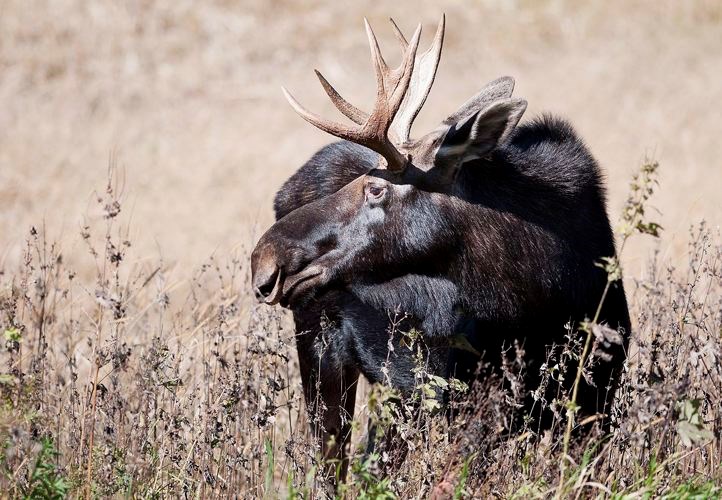Two orphaned moose calves are now safe and sound after being rescued in Prince George on Saturday.
Only days old, the brother and sister were found after losing their mother in a vehicle accident days earlier.
The rescue team was led by Roy Rea, a senior lab instructor at UNBC who has done extensive research in the areas of plant-animal interactions, moose-human interactions and mitigation of wildlife-vehicle collisions.
"There were many people who helped with this rescue," Rea said.
Phil Myatovic was one of these people and, according to Rea, he's the real hero in the rescue after having spotted the two calves on his mother's property in the Northwood Pulpmill Road area.
"He was pretty sure one of them was dead before I met up with him," Rea said.
"And they were just about dead when we found them. They were so weak and could hardly stand," Rea said. "We couldn't believe they were both alive."
Typically after a few days, a moose calf is able to outrun a human.
But this was not the case for these calves without their mother.
The problem with orphaned moose calves is that they are either highly mobile or they hunker down somewhere, basically making themselves invisible.
It takes manpower and patience to capture these youngsters, according to the Northern Lights Wildlife Society in Smithers, where the calves are now staying and expected to make a full recovery.
"As soon as we got them, we put them in kennels and raced down to Ospika (Animal Hospital)," Rea said.
Once at Ospika Animal Hospital, the two special patients were examined and administered fluids before traveling to the Northern Lights Wildlife Society.
"We have dealt with these situations in the past," said Kelsey MacNeil, animal health technologist at the hospital.
"These two did not look good at all when they first came in but before they left, they were already trying to nurse."
The calves are now resting comfortably at the Northern Lights Wildlife Society, a non-profit organization that specializes in nursing abandoned animals back to health.
"We are very happy with their progress," said Shawn Landry, a volunteer at the shelter.
"They are eating really well and both are coming along nicely but they are still very sensitive."
Even when with their mothers, moose calf survival rates are low in their first year due to various factors such as predation, harsh weather conditions and hunting.
Moose calves usually stay with their mothers until breeding season. A young bull will not be chased away until it reaches it's second year of growth.
Female calves on the other hand, usually stay with their mothers or near them for several years until they wander away.
Had the two calves not be found, their chances of survival were next to nil, according to Rea.
Today, brother and sister seem to be in fairly good shape and are drinking their special formula. But they are still very fragile and susceptible to infections so the two youngsters are not out of the woods yet, according to Northern Lights Wildlife Society.
"They are eating well and we are keeping an eye on their stool which is a sure indicator of their condition. It seems to be forming well," Landry said.
"They are standing, they are alert, their eyes are not glazed over, they are building muscle and strength and they are aware of people and their surroundings. These are all good signs and we are very happy with their progress."
A full recovery is expected for the two young siblings.
"We will begin supplementing their bottles with some food from the wild like willow trees," Landry said.
"They will then be moved to one of our enclosures where they will be monitored in a controlled environment until they are ready."
"It's amazing that they survived," Rea said. "Bears are really hungry this time of year. For these calves to be alive and in good condition with no scratches, it's crazy that they knew how to stay alive."



